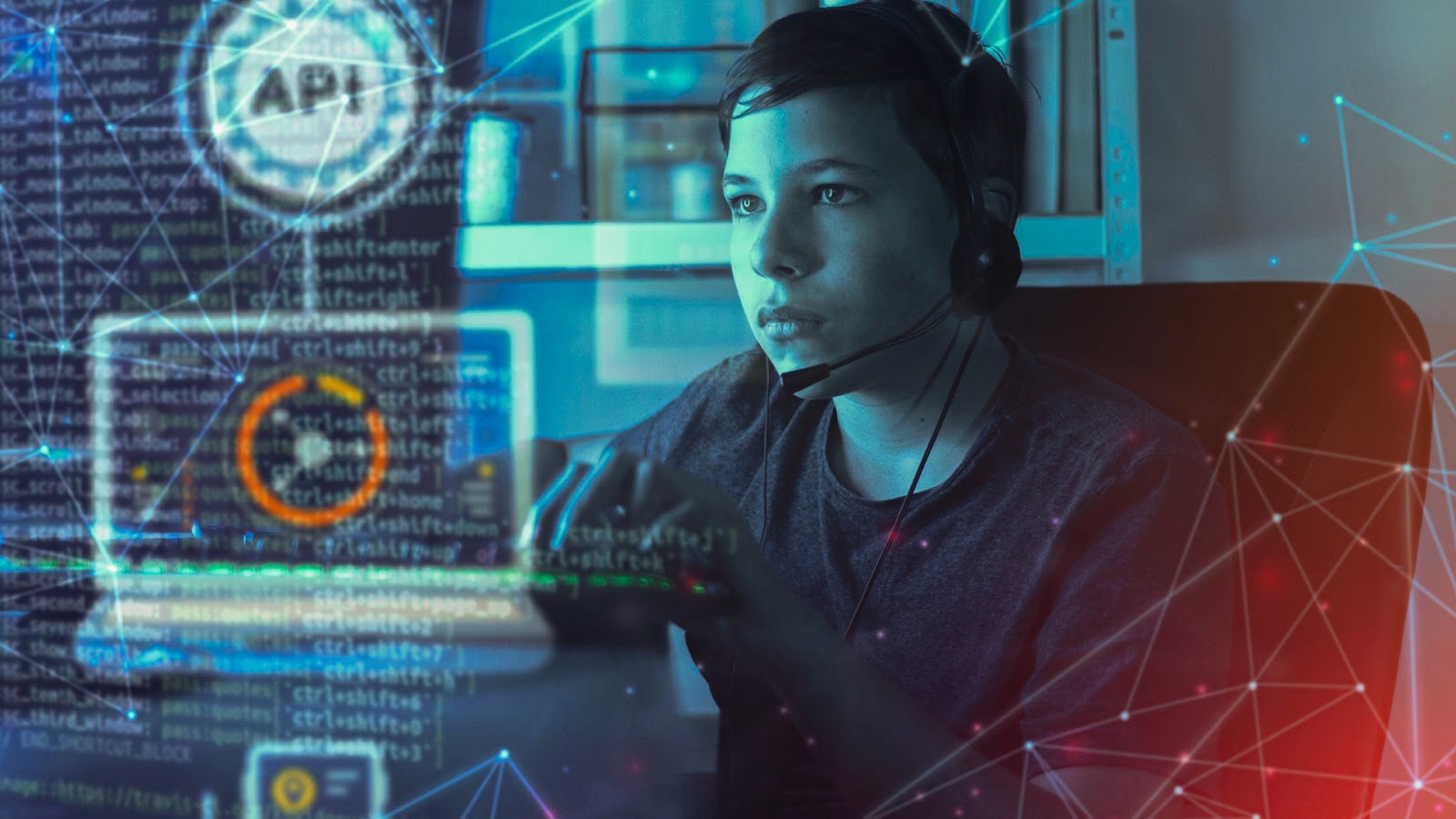As AI systems become more embedded in the tools we use to build, test, and ship software, their connection to the outside world deepens. They no longer run as isolated language models in chats; instead, they connect directly to APIs, databases, file systems, and cloud services. That connection makes them both powerful and risky.
The Model Context Protocol (MCP) is at the center of this shift. It’s the bridge that allows AI agents to reach out from your IDE and interact with real systems: updating Figma files, querying a Notion database, deploying to production, or pulling sensitive data from internal dashboards. With that kind of access, security isn’t just a side concern; it’s part of the core design.
MCP makes things fast and powerful, but also porous. A misconfigured server, an over-permissive tool, or an unvalidated input isn’t just a bug waiting to happen; it’s an open path to something worse. And because these systems operate in real time and automate actions, the damage can happen quietly and quickly.
In this post, we’ll look at how MCP creates new security challenges, why traditional safeguards fall short in this context, and what practical steps you can take to keep your tools and your data under control.
Key Takeaways
- MCP changes how AI connects to tools – It enables AI clients to interact directly with services like APIs, databases, and file systems, which introduces practical risks that traditional security models don’t address.
- Credential management is central – Unscoped tokens, static keys, and shared credentials are common weak points. Use short-lived, narrowly scoped tokens, and rotate them regularly.
- Third-party tools need scrutiny – MCP makes it easy to plug in tools, but not all tools are trustworthy. Always audit, sandbox, and verify before integration.
- Input/output validation is non-negotiable – Unchecked prompts or tool responses can trigger unwanted actions. Validate data at every step.
- Observability matters – Without logs and real-time monitoring, it’s difficult to detect misuse. Track all requests, outputs, and tool activity for auditing and response.
What is Model Context Protocol (MCP)?

The Model Context Protocol (MCP) is a modern communication standard that allows AI systems to interact directly with external tools, services, and data sources in a unified and predictable way. Instead of building custom integrations for every new API or service, MCP creates a common language between AI applications and the external world.
At its core, MCP follows a client-server model. The host application, like Cursor or Claude, acts as the client, sending structured requests to external tools known as MCP servers. These servers perform tasks such as fetching data, taking actions, or generating files, and then return results to the host in real time. This setup allows AI-powered applications to interact directly with tools, APIs, and services, no custom code required.
Communication is powered by JSON-RPC 2.0, using either stdio for local execution or Streamable HTTP for cloud and remote servers. These transports ensure low latency and high compatibility across tools and platforms.
With growing adoption across developer tools, open-source ecosystems, and AI platforms, MCP is quickly becoming the backbone for turning language models into capable, connected systems. But with this expanded capability comes increased exposure. The same connections that make MCP so powerful can also introduce serious risks if left unchecked.
Security Risks of MCP

While Model Context Protocol (MCP) opens up a world of possibilities for AI-powered systems, it also introduces a number of AI MCP security risks that need to be addressed. Because MCP allows AI clients to interact with external tools and services directly, it significantly expands the system’s attack surface and introduces new opportunities for abuse. Here are some of the key AI MCP security vulnerabilities associated with MCP-enabled systems.
1. Prompt Injection
Prompt injection happens when someone manipulates the input given to an AI system, causing the host environment, whether it’s Cursor, 5ire, BoltAI, Windsurf, or Zed, to perform unintended or harmful actions.
Because MCP allows these platforms to talk directly to external tools and services, a cleverly crafted prompt can:
- Expose sensitive data by hiding malicious instructions within seemingly innocent input
- Initiate unauthorized actions, like updating records, deleting files, or triggering workflows, by steering how the system interprets commands.
As these AI-powered environments become more capable and embedded across workflows, prompt injection becomes an even more serious risk, especially when there aren’t strong input checks or permission limits in place.
2. Credential Exposure and Account Takeover
MCP systems often require credentials, such as API keys or OAuth tokens, to authenticate interactions between the AI client and external tools. If these credentials are not properly secured, they can be exposed to attackers, leading to serious AI MCP security breaches.
An attacker who gains access to these credentials can:
- Impersonate legitimate users or services, gaining unauthorized access to sensitive data.
- Execute actions on behalf of the compromised account, such as sending commands or manipulating external systems.
3. Tool Poisoning and Malicious Tools
Another significant risk posed by MCP is tool poisoning. MCP allows AI clients to interact with external tools, many of which are created by third-party vendors or open-source contributors.
If these tools are not carefully vetted, attackers can introduce malicious functionality into the toolset. Malicious tools can:
- Harvest sensitive data, such as credentials or customer information, from the systems the AI is connected to.
- Carry out unauthorized actions like sending commands to delete or alter records, or even installing malware on the connected systems.
By gaining access to an MCP server that hosts malicious tools, attackers can infiltrate the entire AI system, bypassing AI MCP security measures.
4. Command Injection and Unauthorized Execution
Command injection vulnerabilities occur when an MCP system accepts unvalidated user input and passes it to an external system or service to execute.
This can result in attackers exploiting these systems to:
- Execute arbitrary commands on the underlying infrastructure, such as deleting files, installing malware, or gaining shell access.
- Gain control over systems by using MCP’s ability to send commands to external servers or APIs without proper input validation or filtering.
5. Data Leakage and Exfiltration
MCP enables AI models to retrieve and process data from various external sources. While this facilitates powerful, real-time interactions, it also increases the likelihood of data leakage and exfiltration.
Attackers can exploit vulnerabilities in the MCP system to:
- Intercept sensitive data being transmitted between AI Clients and external tools.
- Exfiltrate data by manipulating the tools or servers that the AI client connects to, causing it to send data to malicious external endpoints.
Ensuring end-to-end encryption and secure data transmission is vital to protect data integrity and prevent unauthorized access during communication between the AI system and external sources.
Key Vulnerabilities in MCP Security
MCP-enabled environments introduce new security risks, especially when tools execute code, access APIs, or transmit data with minimal oversight. Here are some of the most critical issues to watch:
1. MCP Rug Pulls
A rug pull occurs when an attacker initially creates a seemingly benign MCP server that offers harmless tools and functionalities. However, after building trust, the server can be silently updated to include malicious tools or commands. This sudden shift can lead to:
- Data exfiltration through newly introduced malicious tools.
- Undetected execution of harmful actions like modifying or deleting critical data.
The difficulty in detecting this kind of attack lies in the fact that it can occur without warning, making it critical to monitor and vet the tools integrated into MCP servers continuously.
2. Composability Risks
MCP allows composability, meaning an MCP server can also act as a client, requesting and utilizing data from other MCP servers. While this provides flexibility, it also opens up the door for composability risks. In this scenario:
- A seemingly harmless MCP server could call on a malicious server to fulfill its requests.
- Attackers can exploit composability to chain multiple compromised servers, leading to data leakage or malicious actions across the entire system.
3. Insecure API Endpoints
Many MCP servers rely on publicly exposed API endpoints to facilitate communication between AI clients and external systems. This opens up a significant security risk. If these endpoints aren't properly secured, attackers could:
- Send malicious requests to the MCP servers
- Gain unauthorized access to data or trigger unintended actions on connected systems.
5. Lack of Observability and Auditing
Another critical vulnerability in AI MCP security is the lack of built-in monitoring and observability in many MCP implementations. Without effective logging and auditing mechanisms, it becomes extremely difficult to trace suspicious activity or pinpoint the source of a breach. This lack of visibility can allow attackers to:
- Operate undetected within an organization’s systems.
- Modify or exfiltrate data without leaving an obvious trail.
To address this, organizations should implement comprehensive logging and real-time monitoring of all MCP interactions.
Best Practices for Securing MCP-Enabled AI Systems

To keep AI clients powered by MCP safe and trusted, organizations need to go beyond theory. Setting strong boundaries between systems and tools is where real protection begins. The suggestions below reflect actual threats seen in the wild and strategies endorsed by MCP-focused security experts.
1. Use Scoped Credentials & Limit Access
- Fine-Grained Token Controls: Assign narrowly scoped credentials. For example, a data-fetch tool should only read, not modify or delete.
- Short-Lived and Rotating Secrets: Static credentials are a liability. Rotate tokens, enforce short expiry, and store secrets securely in vaults.
- Strict Role Separation: An AI client built for testing shouldn’t access production systems. Segment tools so each client has just what it needs.
2. Validate All Inputs and Outputs
- Input Sanitization: MCP servers must enforce strict schema checks and allowlists, reject unexpected file paths, SQL, or shell patterns.
- Output Filtering: Strip tokens or code-like patterns from any response before sending it back into the AI’s context to prevent prompt injection.
3. Harden Your Deployment
- Resource Safety: Run stdio-based MCP binaries in sandboxed containers or VMs that restrict file and network access.
- Rate and Quota Limits: Apply throttles to slow down loops or abuse scenarios. This helps catch runaway agents or automated misuse.
4. Vet Third-Party MCP Servers Carefully
- Code Reviews Required: Only trust servers with auditable source code. Malicious or buggy tools are a top risk.
- Sandbox Before Use: Test third-party MCP servers in isolated environments before allowing them to talk to your AI clients.
- Watch for Tool Poisoning: Attackers might disguise dangerous tools under innocent names. Make sure each tool is verified and trusted.
5. Establish Clear Authorization Controls
- Map Permissions to Identity: Each client needs a unique identity that limits its reach within toolspace.
- Strong Policies and Consent Models: Avoid default trust. Require explicit approvals for sensitive actions.
6. Log Everything, Monitor Intently
- Comprehensive Audit Trails: Track inputs, outputs, choices, and tool invocations in real time.
- Trigger Alerts: Flag unexpected behavior, like bursts of activity, unusual commands, or rogue file access.
7. Include Humans for High-Risk Actions
- Critical actions, such as deleting or modifying production data, should require explicit human approval through a Human-in-the-Loop process.
8. Stress Test and Red-Team the Setup
- Simulated Attacks: Use red-team tools and MCP-aware scanners to model what a breach could look like.
- Software Security Scans: Include SAST, SCA, and secret leakage checks in your deployment pipeline.
MCP is powerful, and that power comes with responsibility. Unlike traditional API integrations, MCP lets AI clients run logic, modify real systems, and operate in real time under the hood. Without hardened boundaries, minimal credentials, and constant oversight, the protocol becomes a liability, not an asset.
Final Thoughts
Model Context Protocol (MCP) has introduced a new layer of connectivity between AI clients and external tools. With this shift comes greater utility, but also greater exposure. Unlike traditional integrations that rely on fixed pipelines and well-audited APIs, MCP allows real-time interactions that execute logic, access resources, and manipulate data with minimal human oversight.
This flexibility demands a stronger focus on boundaries. The security posture of an MCP environment hinges on how credentials are scoped, how inputs are validated, how access is isolated, and how events are monitored. Real-time automation means there’s less room for manual review and more reliance on guardrails built into the architecture. That includes everything from credential rotation and sandboxing to logging and red teaming.
Organizations adopting MCP should treat it as they would any powerful runtime: with clear roles, limited permissions, and constant visibility into what’s happening. When those foundations are in place, MCP can be both safe and productive.
FAQs
1. What is MCP in the context of AI security?
Model Context Protocol (MCP) is a framework that allows AI clients to interact with external systems like tools and databases. While it enhances AI capabilities, it also opens doors to security risks like prompt injection and data leaks.
2. What are the primary security risks with MCP?
The main risks include prompt injection, where attackers manipulate AI prompts to trigger malicious actions, and credential exposure, which can allow unauthorized access. Other risks include tool poisoning, where malicious tools are introduced to exfiltrate data, and command injection, which can compromise external systems by sending unvalidated commands.
3. How can I secure an MCP-enabled AI system?
Use narrowly scoped tokens, rotate credentials regularly, and restrict each AI client to only the tools it needs. Validate all inputs, block unsafe patterns, and filter outputs before they re-enter the prompt. Set strict permissions, log every action, and watch for unusual behavior in real time.
4. What is the best practice for preventing unauthorized tool usage in MCP?
To prevent unauthorized tool usage, implement tool whitelisting only to allow trusted tools, apply granular access control to limit access, and use Human-in-the-Loop controls for high-risk actions, ensuring that AI operations are properly reviewed and approved.


.gif)
.png)



